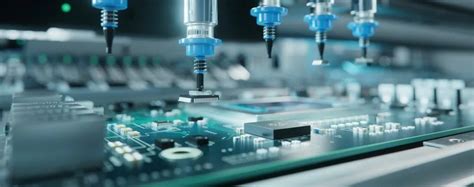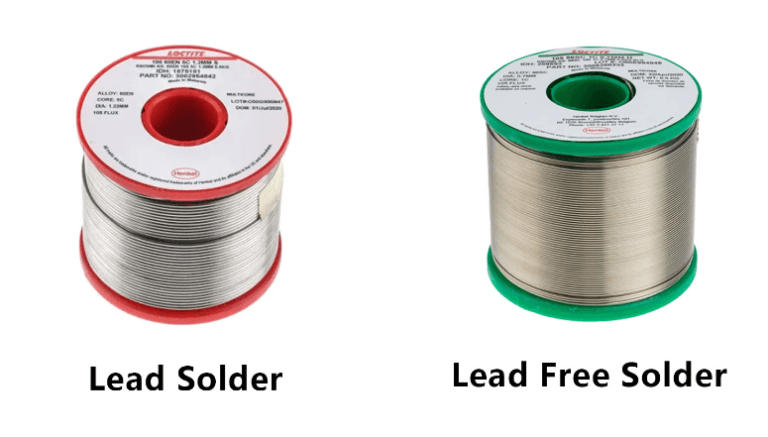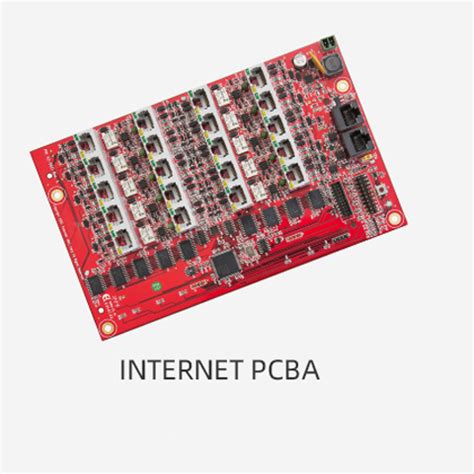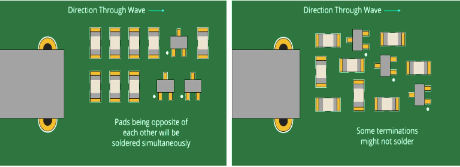Printed Circuit Board (PCB) Materials: A Comprehensive Overview
Introduction
Printed Circuit Boards (PCBs) are the backbone of modern electronics, providing the necessary platform for mounting and interconnecting electronic components. The performance, reliability, and longevity of a PCB are heavily influenced by the materials used in its construction. This article delves into the various materials used in PCB manufacturing, their properties, and their impact on the overall performance of the PCB.
1. Substrate Materials
The substrate, or base material, is the foundation of a PCB. It provides mechanical support and electrical insulation between the conductive layers. The most common substrate materials are:
1.1 FR-4
FR-4 (Flame Retardant 4) is the most widely used substrate material in PCB manufacturing. It is a composite material made from woven fiberglass cloth with an epoxy resin binder. FR-4 is known for its excellent mechanical strength, electrical insulation properties, and flame resistance.
- Properties:
- High mechanical strength
- Good electrical insulation
- Flame retardant
- Cost-effective
- Applications:
- Consumer electronics
- Industrial controls
- Automotive electronics
1.2 High-Frequency Laminates
For high-frequency applications, such as RF and microwave circuits, standard FR-4 may not be suitable due to its relatively high dielectric constant and loss tangent. High-frequency laminates, such as Rogers, Taconic, and PTFE-based materials, are used instead.
- Properties:
- Low dielectric constant
- Low loss tangent
- Excellent thermal stability
- Applications:
- RF and microwave circuits
- Aerospace and defense
- Telecommunications
1.3 Metal Core PCBs
Metal Core PCBs (MCPCBs) use a metal base, typically aluminum or copper, to provide superior thermal management. The metal core helps dissipate heat generated by high-power components, making MCPCBs ideal for LED lighting and power electronics.
- Properties:
- Excellent thermal conductivity
- High mechanical strength
- Good electrical insulation (with dielectric layer)
- Applications:
- LED lighting
- Power converters
- Automotive electronics
2. Conductive Materials
The conductive layers in a PCB are typically made from copper due to its excellent electrical conductivity and relatively low cost. The thickness of the copper layer is specified in ounces per square foot (oz/ft²), with common thicknesses ranging from 0.5 oz/ft² to 2 oz/ft².
2.1 Copper Foil
Copper foil is the primary conductive material used in PCBs. It is laminated onto the substrate and then etched to create the desired circuit patterns.
- Properties:
- High electrical conductivity
- Good thermal conductivity
- Excellent solderability
- Applications:
- All types of PCBs
2.2 Surface Finishes
To protect the copper from oxidation and improve solderability, various surface finishes are applied to the exposed copper areas. Common surface finishes include:
- HASL (Hot Air Solder Leveling):
- A layer of solder is applied to the copper and then leveled with hot air.
- Properties:
- Good solderability
- Cost-effective
- Applications:
- General-purpose PCBs
- ENIG (Electroless Nickel Immersion Gold):
- A thin layer of nickel is deposited on the copper, followed by a thin layer of gold.
- Properties:
- Excellent solderability
- Good oxidation resistance
- Flat surface for fine-pitch components
- Applications:
- High-reliability PCBs
- Fine-pitch components
- OSP (Organic Solderability Preservative):
- A thin organic layer is applied to the copper to prevent oxidation.
- Properties:
- Cost-effective
- Good solderability
- Limited shelf life
- Applications:
- Consumer electronics

3. Dielectric Materials
Dielectric materials are used to insulate the conductive layers in multi-layer PCBs. The choice of dielectric material affects the electrical performance, thermal management, and mechanical stability of the PCB.
3.1 Prepreg
Prepreg (pre-impregnated) is a fiberglass material impregnated with resin. It is used to bond the layers of a multi-layer PCB together during the lamination process.
- Properties:
- Good electrical insulation
- High mechanical strength
- Thermal stability
- Applications:
- Multi-layer PCBs
3.2 Core Materials
The core material is the rigid base of a PCB, typically made from FR-4 or other high-performance materials. It provides the structural integrity of the PCB.
- Properties:
- High mechanical strength
- Good electrical insulation
- Thermal stability
- Applications:
- All types of PCBs
3.3 High-Performance Dielectrics
For high-frequency and high-speed applications, specialized dielectric materials with low dielectric constants and low loss tangents are used. These materials help minimize signal loss and distortion.
- Properties:
- Low dielectric constant
- Low loss tangent
- Excellent thermal stability
- Applications:
- High-frequency PCBs
- High-speed digital circuits
4. Solder Mask Materials
The solder mask is a protective layer applied over the copper traces to prevent solder bridges and protect the PCB from environmental factors. Common solder mask materials include:
4.1 Liquid Photoimageable Solder Mask (LPSM)
LPSM is the most common type of solder mask. It is applied as a liquid and then exposed to UV light through a photomask to create the desired pattern.
- Properties:
- Excellent resolution
- Good adhesion
- Chemical resistance
- Applications:
- All types of PCBs
4.2 Dry Film Solder Mask
Dry film solder mask is a solid film that is laminated onto the PCB and then exposed to UV light through a photomask.
- Properties:
- Uniform thickness
- Good chemical resistance
- Limited resolution compared to LPSM
- Applications:
- High-volume production

5. Specialized Materials
5.1 Flexible PCB Materials
Flexible PCBs use flexible substrate materials, such as polyimide or polyester, to allow the PCB to bend and flex without breaking.
- Properties:
- High flexibility
- Good thermal stability
- Excellent electrical insulation
- Applications:
- Wearable electronics
- Medical devices
- Aerospace
5.2 Ceramic Substrates
Ceramic substrates are used in high-temperature and high-power applications due to their excellent thermal conductivity and stability.
- Properties:
- High thermal conductivity
- Excellent thermal stability
- High mechanical strength
- Applications:
- High-power electronics
- High-temperature environments
5.3 High-Tg Materials
High-Tg (glass transition temperature) materials are used in applications where the PCB will be exposed to high temperatures, such as in automotive or industrial environments.
- Properties:
- High thermal stability
- Good mechanical strength
- Excellent electrical insulation
- Applications:
- Automotive electronics
- Industrial controls
Conclusion
The choice of materials in PCB manufacturing is critical to the performance, reliability, and longevity of the final product. From the substrate and conductive layers to the dielectric and solder mask materials, each component plays a vital role in determining the overall quality of the PCB. As technology continues to advance, new materials and manufacturing techniques will continue to evolve, enabling the development of more complex and high-performance PCBs for a wide range of applications.
Understanding the properties and applications of different PCB materials allows engineers and designers to make informed decisions, ensuring that their PCBs meet the specific requirements of their intended use. Whether it’s a simple consumer electronic device or a complex high-frequency RF circuit, the right materials are essential for achieving optimal performance and reliability.






